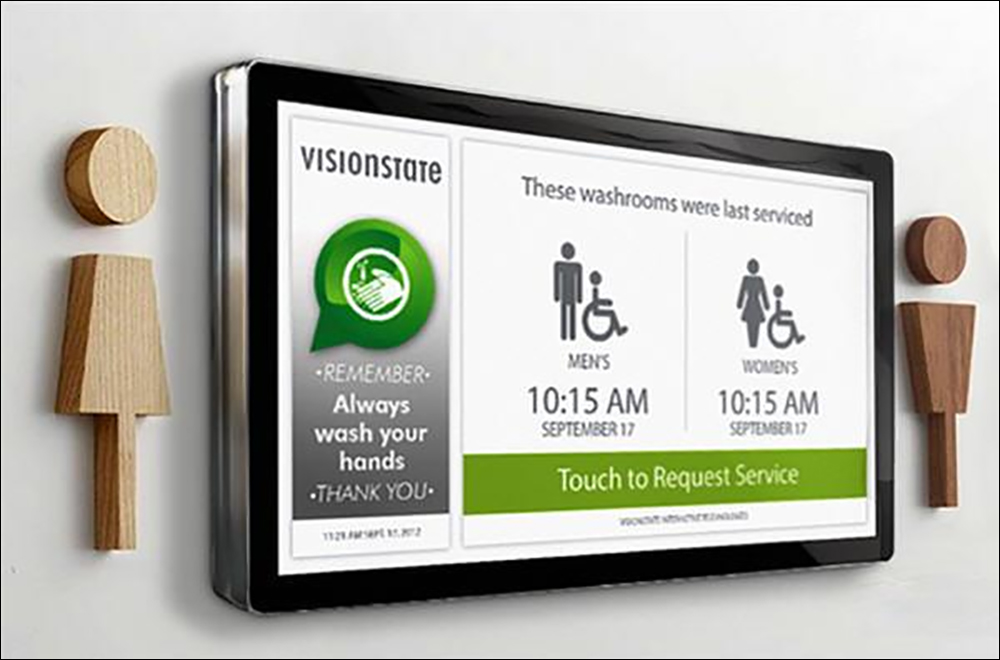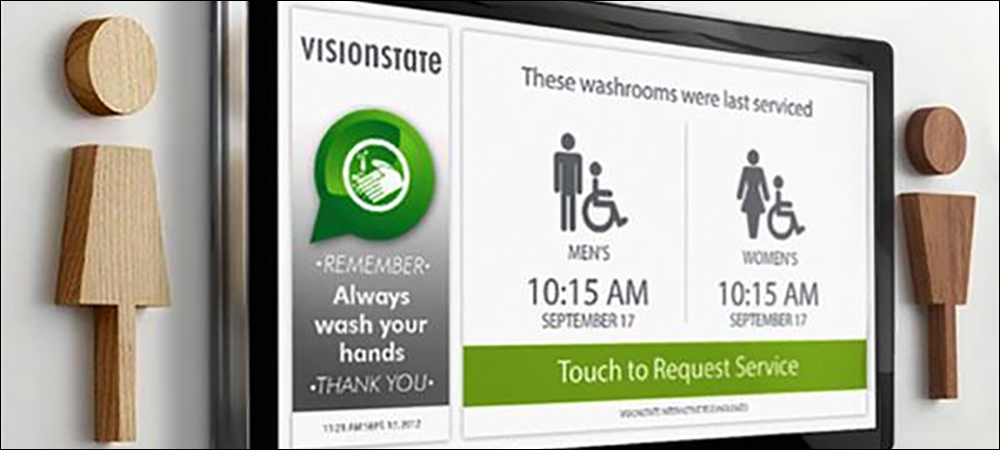- Taking RFID to Hospitals for Asset Management
- Tracking What Has Been Cleaned and Where
- Pilot Tracks Location and Status of Gurneys, Wheelchairs
Visionstate first delivered its Internet of Things (IoT) offerings so that hospitals could track the services of facility spaces, such as the cleaning and restocking of public bathrooms. Its solutions employ traffic sensors, QR codes, Near Field Communication (NFC), and tablets or smartphones running an app known as WANDA, which captures a view into what servicing has been performed, as well as when and how long it took to accomplish. Now the company has expanded its offering, with hospitals piloting its RFID-based asset-management feature within WANDA so that they can track the cleaning of not only unmoving parts, such as sections of bathrooms, but also critical equipment used in patient care, such as wheelchairs or pumps.
Visionstate serves hospitals, as well as other spaces in which cleaning is necessary. The Alberta-based company added the RFID feature to its existing WANDA platform based on demand from hospital customers facing greater pressure due, in part, to the COVID-19 pandemic. With passive UHF RFID tags added to mobile equipment, WANDA can track where items are located, when they moved, when they provided patient care and when they were cleaned. In that way, hospitals can better ensure equipment is ready when needed.

The WANDA app
“Tracking critical assets is an important part of efficient operations,” says John Putters, Visionstate’s CEO. “RFID tracking helps control inventory and accurately measure its use and consumption.” The company has a background in RFID solutions, and it offers asset-management technology for the oil and gas industry through its solutions partner, Safe-T-Whip. The RFID solution provides companies that rent equipment in the oil and gas sector with the ability to track and streamline inventory and product movement.
Each product receives an RFID tag and can then be tracked via RFID readers as it enters and exits defined areas, such as warehouses or supply rooms. This process has improved inventory management, Putters explains, and provides more accurate data for billing purposes, based on the length of time a given product was rented.
Taking RFID to Hospitals for Asset Management
Now, Putters says, RFID can be used as part of the WANDA solution in the healthcare sector. Traditionally, WANDA has helped hospitals ensure proper cleaning services. Approximately half of Visionstate’s customers are healthcare companies, and the other half are the cleaning service businesses that serve them. The initial goal, he recalls, was to ensure that services were provided properly and efficiently. Facility management is labor-based, Putters notes, so how companies utilize labor is crucial.
The IoT technology can track how much time workers spend in a specified space, such as a restroom. Cleaning personnel can use their phones or tablets as they enter an area that requires cleaning. First they can log into the WANDA app, which creates a record of who starts each new task, and as they scan sensors around the room, they can follow instructions indicating what task has been completed. That data can be linked to other sensor-based information, such as data culled from people counters, to track how much the room has been used since the last cleaning, as well as how many times soap dispensers were accessed. Visionstate partners with Tork, whose hand-hygiene product dispensers capture that data.
During the pandemic, the company found a greater demand from hospitals seeking to track cleaning protocols for health safety purposes. The company developed its mobile app to meet the latest cleaning protocols, which was released in 2021. However, a Canadian hospital (which has asked to remain unnamed) that is using the technology for restroom cleaning management also wanted to track the cleaning protocol for gurneys and wheelchairs. That’s where RFID provides a benefit, Putters says. “It’s very hard to clean something [when] you don’t know where it is,” he explains.
The hospital’s two requirements were that it be able to track where each asset is located, as well as that item’s cleaning. “That’s when we started looking at RFID particularly for our use,” Putters says. “As soon as we went down that path, all of a sudden a lot of our customers were asking for a similar solution.” As a result, the company built an RFID-based asset-management system into its application earlier this year.
Tracking What Has Been Cleaned and Where
“We’ve always been proponents of clean spaces,” Putters states, “but the addition of RFID is a good differentiator for us because it adds an important piece of functionality for that industry.” Typically, he explains, a UHF RFID tag (Visionstate uses Link Labs‘ label products) is affixed to assets, and the unique ID number encoded on the tag is linked to data in the WANDA application. Each time the tag is read, that information is updated to the system, indicating where it is located and, in some cases, what action is being taken—cleaning or maintenance, for example.
The system can employ either handheld RFID readers used by staff members as they walk throughout the facility or interact with assets, or fixed readers that can be deployed in key areas, such as at the entrance to a department or room, or at elevator doors. The app can provide a dashboard that displays any items requiring servicing, along with where they are. It can also issue alerts if an item is misplaced or has passed its expected servicing date.
Pilot Tracks Location and Status of Gurneys, Wheelchairs
The Canadian hospital is initially piloting the RFID version of WANDA in one wing of its building, to track gurneys and wheelchairs. The medical facility was already using the WANDA system for cleaning service management. The data now all flows into the single WANDA portal, where analytics can manage the efficiency of cleaning services in static areas like bathrooms, while also tracking the assets.
Following the six-month pilot, the company intends to undertake a full commercial rollout of its asset-management system with RFID tags. Visionstate positions itself as a cleaning and hygiene-visibility company for its healthcare customers, as opposed to an RFID technology firm. The RFID-based feature, Putters says, “is a product that is more than just standalone RFID technology—it’s integrated into the rest of our solution, where data can be compiled for holistic views and analytics into hygiene and public safety.”
Hospitals’ key focus, Putters notes, is to create a safe environment for patients and personnel. He sees trends created by the pandemic making it more challenging for such facilities to meet their expectations without technology. With staff shortages, workers are often less experienced. They stay in jobs for less time, he says, and thus need the support of onsite instructions and management that WANDA provides.
Down the line, Visionstate plans to continue offering its RFID technology for other sectors, including oil and gas. The company says it makes upgrades to its cloud-based database and application as customers require.
Key Takeaways:
- Visionstate already offered IoT tools for tracking cleaning tasks at hospitals, while pandemic requirements are driving facilities to enhance and improve cleaning services.
- The WANDA asset-management system is designed to help users view the efficiency and timeliness of room cleaning, and the RFID technology will let them find mobile items that must be serviced.


